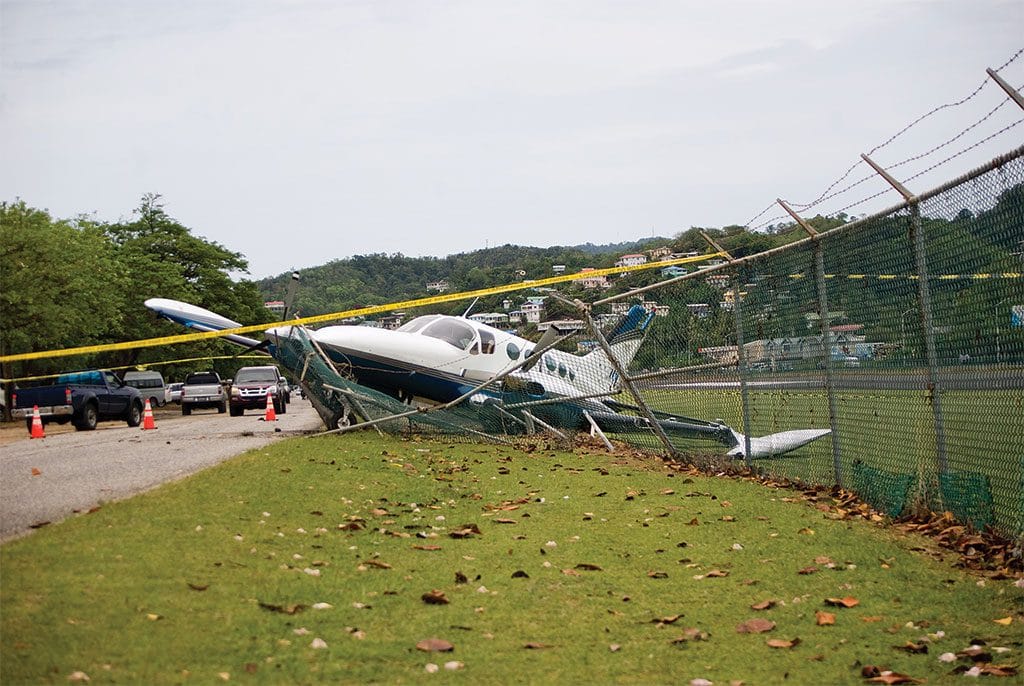Emergency Response: Communicating Through a Crisis
An emergency response plan needs to be practiced to build confidence that will work should a real-life event happen.
In the aftermath of an aircraft accident, aviation operation employees are shocked, stressed, and often emotionally connected to the crew members and passengers. They are overwhelmed with requests for information—from management, families of possible flight crew and passenger victims, regulators, investigators, and media. Yet they need to respond calmly.

The best way to get through the tragic day and its aftermath is not only to have an emergency response plan (ERP) in place beforehand, but to have practiced its components regularly to build “muscle memory” of what steps to take, who to contact, and what information to put out (and what not to put out). There will be many events happening quickly and organizations will need to interpret the data accurately and make decisions promptly.
“Operators need to be prepared to take care of the three Ps—People, Perception (the company brand image), and Participation in the investigation,” explains Carla Tirel, Fireside’s Assistant Vice President for Operations. “The ERP is a roadmap. But the experience of managing an emergency response is much more than a piece of paper. It’s a holistic program. It involves a mindset and a culture, and the requisite resources to make your ERP a truth-telling document.”
Families First
Fireside and other crisis experts strongly advocate that, before anyone else, the families of potential victims should be notified.
And, it’s best to have a neutral party be the initial bearer of bad news. “The pilots thought they should be the ones to contact spouses,” says Amber Finchum, an NBAA Committee Member who is a Flight Coordinator, FAA Licensed Dispatcher and Professional ERP Lead for a four-aircraft flight department. “You may think you’re being a good friend, but consider this: in telling someone their spouse has been killed in an accident, they will always look at you as the person who totally changed their life, and chances are, with little or no training, it will not go well.”
“After the families, you want employees to know before the press,” Tirel notes.
One Media Spokesperson
Social media, of course, has dramatically altered the “news cycle,” enabling instantaneous posting of photos, videos, and eyewitness accounts of an event, adding to the pressure on managing accurate communications.
“The important thing in crisis response is speed,” emphasizes Martin Free, DuPont Aviation’s safety manager. “People with cameras want to have the story first, but their information is not verified. We have to be ahead of that wave.”
Company employees, including those in the aviation operation, should not provide information to the press or social media. Rather, there should be a single spokesperson, most likely the corporate communications leader, who disseminates periodic, fact-based reports, based on the data available at the time and after consultation with key leaders of the response team and investigators.
Practice Makes Better
Fireside Partners provides a “Tactical ERP” that features a color-coded reference table to help quickly determine the magnitude of the response necessary. It is important that, in a stressful situation, anyone can open the ERP, work through the plan, complete the checklist and communicate effectively by following the color-coded system.
Fireside paces its clients through a series of escalating rehearsal scenarios, both to prepare the teams and individuals for a possible event and to identify weaknesses in the plan.
Training might include a “tabletop” exercise that gives you an idea of what’s going to happen in the first few hours, but without the pressure of a live event. The next phase is more experiential, adding real phone calls, but with pauses to discuss ERP adjustments.
The final drill is real time for three hours. If there is a mistake in the first 10 minutes, it will have a cascading effect. The purpose is to keep participants challenged and involved.
“Most business aviation companies have a plan,” Tirel acknowledges. “[But] most of the plans I’ve seen are either insufficient—they don’t address all the components—or they look stellar on paper, but the actual ability of the company to take action on the plan is lacking. For those who walk through these training sessions a few times and are able to iron out the wrinkles, it works very efficiently.”

DuPont’s Free emphasizes the importance of involving all stakeholders in the ERP drills. “A lot of eyes are opened by the drills,” he says. Participants “realize these events happen and we need to get out in front of them to protect the corporation.”
Finchum adds, “An aviation event is a completely different dynamic, even a different language from a traditional corporate crisis plan. Integration of the corporate crisis plan and aviation ERP is essential to the overall success of managing an event. It’s important to train the corporate team, get to know the players and build the relationships. The corporate team needs the understanding and confidence in our aviation department to be able to handle an aviation event, knowing they have an integral role in the team effort.”
Editor’s Note: Article modified from original published in Sept/Oct 2017 issue of NBAA Business Aviation Insider.




